
TRXI-22A, TRXI-24A, TRXI-42A,
AND TRXI-44A ACTIVE
TOKEN RING INTELLIGENT HUB
USER’S GUIDE
CABLETRON SYSTEMS, P. O. Box 5005, Rochester, NH 03867-0505

NOTICE
i
NOTICE
Cabletron Systems reserves the right to make changes in specifications and other
information contained in this document without prior notice. The reader should in all
cases consult Cabletron Systems to determine whether any such changes have been
made.
The hardware, firmware, or software described in this manual is subject to change
without notice.
IN NO EVENT SHALL CABLETRON SYSTEMS BE LIABLE FOR ANY INCIDENTAL,
INDIRECT, SPECIAL, OR CONSEQUENTIAL DAMAGES WHATSOEVER
(INCLUDING BUT NOT LIMITED TO LOST PROFITS) ARISING OUT OF OR
RELATED TO THIS MANUAL OR THE INFORMATION CONTAINED IN IT, EVEN
IF CABLETRON SYSTEMS HAS BEEN ADVISED OF, KNOWN, OR SHOULD HAVE
KNOWN, THE POSSIBILITY OF SUCH DAMAGES.
© Copyright May 1994 by:
Cabletron Systems, Inc.
P.O. Box 5005, Rochester, NH 03867-0505
All Rights Reserved
Printed in the United States of America
Order Number: 9031079 May 94
TRXI-22A
,
TRXI-24A
,
TRXI-42A
,
TRXI-44A,
and
TPIM
are trademarks of Cabletron
Systems, Inc.
SPECTRUM, LANVIEW
, and
Remote LANVIEW
are registered trademarks of
Cabletron Systems, Inc.
IBM
is a registered trademark of International Business Machines Corporation.
DEC
,
VT200
, and
VT300
are trademarks of Digital Equipment Corporation.
CompuServe
is a trademark of Compuserve, Inc.
Printed On
Recycled Pape
r

NOTICE
ii
FCC NOTICE
This device complies with Part 15 of the FCC rules. Operation is subject to the following
two conditions: (1) this device may not cause harmful interference, and (2) this device
must accept any interference received, including interference that may cause undesired
operation.
NOTE: This equipment has been tested and found to comply with the limits for a Class
A digital device, pursuant to Part 15 of the FCC rules. These limits are designed to
provide reasonable protection against harmful interference when the equipment is
operated in a commercial environment. This equipment uses, generates, and can radiate
radio frequency energy and if not installed in accordance with the operator’s manual,
may cause harmful interference to radio communications. Operation of this equipment
in a residential area is likely to cause interference in which case the user will be required
to correct the interference at his own expense.
WARNING: Changes or modifications made to this device which are not expressly
approved by the party responsible for compliance could void the user’s authority to
operate the equipment.
DOC NOTICE
This digital apparatus does not exceed the Class A limits for radio noise emissions from
digital apparatus set out in the Radio Interference Regulations of the Canadian
Department of Communications.
Le présent appareil numérique n’émet pas de bruits radioélectriques dépassant les
limites applicables aux appareils numériques de la class A prescrites dans le Règlement
sur le brouillage radioélectrique édicté par le ministère des Communications du Canada.
CABLETRON SYSTEMS, INC. PROGRAM LICENSE AGREEMENT
IMPORTANT: Before utilizing this product, carefully read this License Agreement.
This document is an agreement between you, the end user, and Cabletron Systems, Inc.
(“Cabletron”) that sets forth your rights and obligations with respect to the Cabletron
software program (the “Program”) contained in this package. The Program may be
contained in firmware, chips or other media. BY UTILIZING THE ENCLOSED
PRODUCT, YOU ARE AGREEING TO BECOME BOUND BY THE TERMS OF THIS
AGREEMENT, WHICH INCLUDES THE LICENSE AND THE LIMITATION OF
WARRANTY AND DISCLAIMER OF LIABILITY. IF YOU DO NOT AGREE TO THE
TERMS OF THIS AGREEMENT, PROMPTLY RETURN THE UNUSED PRODUCT TO
THE PLACE OF PURCHASE FOR A FULL REFUND.
CABLETRON SOFTWARE PROGRAM LICENSE
1. LICENSE. You have the right to use only the one (1) copy of the Program provided
in this package subject to the terms and conditions of this License Agreement.
You may not copy, reproduce or transmit any part of the Program except as
permitted by the Copyright Act of the United States or as authorized in writing by
Cabletron.

NOTICE
iii
2. OTHER RESTRICTIONS. You may not reverse engineer, decompile, or
disassemble the Program.
3. APPLICABLE LAW. This License Agreement shall be interpreted and governed
under the laws and in the state and federal courts of New Hampshire. You accept
the personal jurisdiction and venue of the New Hampshire courts.
EXCLUSION OF WARRANTY AND DISCLAIMER OF LIABILITY
1. EXCLUSION OF WARRANTY. Except as may be specifically provided by
Cabletron in writing, Cabletron makes no warranty, expressed or implied,
concerning the Program (including Its documentation and media).
CABLETRON DISCLAIMS ALL WARRANTIES, OTHER THAN THOSE
SUPPLIED TO YOU BY CABLETRON IN WRITING, EITHER EXPRESS OR
IMPLIED, INCLUDING BUT NOT LIMITED TO IMPLIED WARRANTIES OF
MERCHANTABLITY AND FITNESS FOR A PARTICULAR PURPOSE, WITH
RESPECT TO THE PROGRAM, THE ACCOMPANYING WRITTEN MATERIALS,
AND ANY ACCOMPANYING HARDWARE.
2. NO LIABILITY FOR CONSEQUENTIAL DAMAGES. IN NO EVENT SHALL
CABLETRON OR ITS SUPPLIERS BE LIABLE FOR ANY DAMAGES
WHATSOEVER (INCLUDING, WITHOUT LIMITATION, DAMAGES FOR LOSS
OF BUSINESS, PROFITS, BUSINESS INTERRUPTION, LOSS OF BUSINESS
INFORMATION, SPECIAL, INCIDENTAL, CONSEQUENTIAL, OR RELIANCE
DAMAGES, OR OTHER LOSS) ARISING OUT OF THE USE OR INABILITY TO
USE THIS CABLETRON PRODUCT, EVEN IF CABLETRON HAS BEEN
ADVISED OF THE POSSIBILITY OF SUCH DAMAGES. BECAUSE SOME
STATES DO NOT ALLOW THE EXCLUSION OR LIMITATION OF LIABILITY
FOR CONSEQUENTIAL OR INCIDENTAL DAMAGES, OR ON THE DURATION
OR LIMITATION OF IMPLIED WARRANTEES IN SOME INSTANCES THE
ABOVE LIMITATIONS AND EXCLUSIONS MAY NOT APPLY TO YOU.
UNITED STATES GOVERNMENT RESTRICTED RIGHTS
The enclosed product (a) was developed solely at private expense; (b) contains “restricted
computer software” submitted with restricted rights in accordance with Section 52227-
19 (a) through (d) of the Commercial Computer Software - Restricted Rights Clause and
its successors, and (c) in all respects is proprietary data belonging to Cabletron and/or its
suppliers.
For Department of Defense units, the product is licensed with “Restricted Rights” as
defined in the DoD Supplement to the Federal Acquisition Regulations, Section 52.227-
7013 (c) (1) (ii) and its successors, and use, duplication, disclosure by the Government is
subject to restrictions as set forth in subparagraph (c) (1) (ii) of the Rights in Technical
Data and Computer Software clause at 252.227-7013. Cabletron Systems, Inc., 35
Industrial Way. Rochester, New Hampshire 03867

CONTENTS
v
TABLE OF CONTENTS
CHAPTER 1 INTRODUCTION
1.1 USING THIS MANUAL............................................................1-1
1.2 GETTING HELP........................................................................1-2
1.3 TRXI ACTIVE CONCENTRATOR OVERVIEW......................1-2
1.4 TRXI FEATURES......................................................................1-3
1.5 REMOTE NETWORK MANAGEMENT CAPABILITIES ......1-6
1.6 RECOMMENDED READING...................................................1-6
CHAPTER 2 REQUIREMENTS/SPECIFICATIONS
2.1 CABLE SPECIFICATIONS.......................................................2-1
2.1.1 UTP Cable Specifications for the TRXI-22A/24A
Lobe Ports and TPIM-T2..............................................2-2
2.1.2 STP Cable Specifications For The TRXI-42A/44A
Lobe Ports and TPIM-T1/T4.........................................2-4
2.1.3 Mixed Cable Types........................................................2-6
2.1.4 Multimode Fiber Optic Cable Specifications for
the TPIM-F2..................................................................2-7
2.1.5 Single Mode Fiber Optic Cable Specifications for
the TPIM-F3..................................................................2-8
2.2 CABLE RECOMMENDATIONS/TROUBLESHOOTING.......2-9
2.3 COM 1/COM 2 PORT SPECIFICATIONS..............................2-11
2.4 TPIM SPECIFICATIONS........................................................2-12
2.5 GENERAL SPECIFICATIONS...............................................2-17
CHAPTER 3 INSTALLATION
3.1 UNPACKING THE TRXI..........................................................3-1
3.2 ATTACHING THE STRAIN RELIEF BRACKET ...................3-1
3.3 INSTALLING THE TRXI..........................................................3-2
3.3.1 Rack Mounting the TRXI..............................................3-3
3.3.2 Wall Mounting the TRXI..............................................3-4
3.3.3 Free-Standing Installation...........................................3-5
3.4 SETTING THE RING SPEED SWITCH..................................3-6
3.5 SETTING THE NVRAM SWITCH ...........................................3-7
3.6 CONNECTING THE TRXI TO THE POWER SOURCE.........3-8
3.7 CONNECTING THE NETWORK LOBE PORT CABLING....3-8
3.8 INSTALLING THE TPIM RI/RO MODULES........................3-11

CONTENTS
vi
3.8.1 Setting the TPIM’s Phantom Switch and
RI/RO Switch...............................................................3-12
3.8.2 Installing a TPIM to the TRXI....................................3-13
3.8.3 Connecting a Twisted Pair Segment to
the TPIM-T1 ................................................................3-14
3.8.4 Connecting a Twisted Pair Segment to
the TPIM-T2 or TPIM-T4............................................3-15
3.8.5 Connecting a Fiber Optic Link Segment to
the TPIM-F2 or TPIM-F3............................................3-16
3.9 FINISHING THE INSTALLATION........................................3-18
CHAPTER 4 TESTING AND TROUBLESHOOTING
4.1 CHECKING THE INSTALLATION..........................................4-1
4.2 USING LANVIEW LEDs...........................................................4-2
4.3 USING THE LCD DISPLAY .....................................................4-3
4.3.1 Static System Messages................................................4-4
4.3.2 Alarm Messages.............................................................4-5
4.3.3 Unsaved Initialization Messages..................................4-6
4.3.4 Saved System Messages................................................4-7
CHAPTER 5 LOCAL MANAGEMENT
5.1 MANAGEMENT TERMINAL REQUIREMENTS...................5-2
5.1.1 Attaching the Management Terminal..........................5-2
5.1.2 Setting the Management Terminal Setup
Parameters.....................................................................5-3
5.1.3 Modem Cable Configuration and Setup.......................5-4
5.2 ACCESSING LOCAL MANAGEMENT....................................5-5
5.3 USING LOCAL MANAGEMENT..............................................5-6
5.3.1 The System Level Screen..............................................5-8
5.3.2 The SNMP Community Names Screen......................5-13
5.3.3 The SNMP Traps Screen.............................................5-15
5.3.4 The Ring Security Screen............................................5-17
5.3.5 The Device Statistics Screen.......................................5-22
5.3.6 The Chassis Status View Screen................................5-28
5.3.7 The Component Status View Screen..........................5-30
5.3.8 The SNMP Tools Screen..............................................5-31

INTRODUCTION
Page 1-1
CHAPTER 1
INTRODUCTION
Welcome to the Cabletron Systems
TRXI-22A, TRXI-24A, TRXI-42A,
and TRXI-44A Active Token Ring Intelligent Hub User’s Guide
.
This manual provides installation instructions, network
requirements, and reference information for the TRXI Active
stand-alone concentrator. You should have an understanding of Token
Ring (IEEE 802.5) type data communications networks and their
physical layer components before installing the TRXI.
Note
: This manual uses the term TRXI to describe the TRXI -22A, 24A,
42A, and 44A unless otherwise specified.
1.1 USING THIS MANUAL
The following summary provides information about each chapter in
this manual. Read through the summary to familiarize yourself with
this manual’s organization and content.
Chapter 1,
Introduction
, outlines the contents of this manual and
describes features of the TRXI. It also lists recommended reading for
implementing a Token Ring network.
Chapter 2,
Requirements/Specifications
, describes cabling
requirements, network guidelines, and TRXI operating specifications.
Chapter 3,
Installation
, contains instructions for installing your
TRXI and connecting it to the network using the various media types.
This chapter includes instructions for setting the Ring Speed Switch,
setting the NVRAM Switch, installing the TPIMs, and setting the
TPIM Phantom Switch.
Chapter 4,
Testing and Troubleshooting
,
contains procedures for
testing the TRXI after installation, a description of the LANVIEW®
LEDs, and explains the front panel LCD display.
Chapter 5,
Local Management
,
describes how to access Local
Management. It also describes each of the Local Management screens
and the available commands.

INTRODUCTION
Page 1-2
1.2 GETTING HELP
If you need additional support related to the Cabletron Systems TRXI,
or if you have any questions, comments, or suggestions concerning this
manual, contact Cabletron Systems Technical Support:
By phone......................... (603) 332-9400
Monday-Friday; 8am - 8pm EST
By CompuServe
®
............ GO CTRON from any ! prompt
By Internet mail............. [email protected]
1.3 TRXI ACTIVE CONCENTRATOR OVERVIEW
The TRXI stand-alone concentrator provides 12 or 24 RJ45 active
Trunk Coupling Units (TCUs) for Shielded Twisted Pair (STP) or
Unshielded Twisted Pair (UTP) network lobe connections. The
TRXI-22A, 24A, 42A, and 44A are functionally identical with the
exception of the TCU lobe ports. Cabletron offers the following TRXI
configurations:
•
TRXI-22A
, twelve active RJ45 TCU lobe ports that support
category 3, 4, and 5 UTP cabling.
•
TRXI-24A
, twenty-four active RJ45 TCU lobe ports that
support category 3, 4, and 5 UTP cabling.
•
TRXI-42A
, twelve active RJ45 TCU lobe ports that support
IBM Type 1, 2, 6, and 9 STP cabling.
•
TRXI-44A
, twenty-four active RJ45 TCU lobe ports that
support IBM Type 1, 2, 6, and 9 STP cabling.
Figure 1-1. The TRXI-24A
DISPLAY
RI
RO
TRXI-24A TOKEN RING HUB WITH LANVIEW®
24 23 22 21 20 19
18 17 16 15 14 13
12 11 10 9 8 7
6 5 4 3 2 1
COM 2 COM 1
18 17 16 15 14 13
6 5 4 3 2 1
24 23 22 21 20 19
12 11 10 9 8 7
RO
RI
PWR
CPU
ACT
MGMT16 Mb/s
RESET
DISPLAY

INTRODUCTION
Page 1-3
You can upgrade the TRXI-22A and TRXI-42A to twenty-four ports
using a twelve port upgrade kit available from Cabletron Systems
(Cabletron Part Number TRXI-24A-UGKIT or TRXI-44A-UGKIT).
The TRXI provides two additional ports for Ring In and Ring Out
(RI/RO) connections. These ports support Cabletron’s Token Ring Port
Interface Modules (TPIMs). TPIMs provide full repeater functionality.
They are not included with the TRXI, but can be ordered separately
from Cabletron. Table 1-1 lists each TPIM.
1.4 TRXI FEATURES
Active TCU Ports
The active TCU ports regenerate, reshape and filter the incoming
signal permitting UTP lobe cable lengths of up to
100 meters
and STP
lobe cable lengths up to
150 meters
at 16 Mbps ring speed.
Cable Signal Polarity
Differential Manchester encoding is utilized for each of the
concentrator module TCU ports. This permits passing data regardless
of receive link polarity.
Note
: If a reversed polarity condition is discovered, the segment should
be removed from the network and wired correctly (according to the
connector wiring shown in Chapter 2, Requirements / Specifications).
This will avoid the potential for future compatibility problems.
Speed Fault Protection
If a station attempts to insert into the ring at a ring speed
(4 or 16 Mbps) different from what is set on the TRXI, that port is
automatically bypassed to prevent the ring from beaconing. The Lobe
Port Status LED blinks indicating the port with the speed fault is
bypassed.
Local Management
Local Management provides the tools to manage the TRXI and all of
its attached segments. You access Local Management by connecting a
Digital Equipment Corporation VT™ 320 series terminal or a PC
using VT320 emulation software to the TRXI’s COM 1 port.

INTRODUCTION
Page 1-4
Token Ring Port Interface Modules
TPIMs are optional features that let you expand your trunk
connections using different media types. TPIMs have embedded
repeaters and retime all data. Cabletron offers a variety of TPIMs for
trunk Ring In or Ring Out connections. Table 1-2 lists each TPIM.
Ring Speed Switch
The Ring Speed Switch lets you select ring speeds of either 4 Mbps or
16 Mbps. The factory default setting is 16 Mbps.
Flash EEPROMs
The TRXI uses Flash EEPROMs that allow you to download new and
updated firmware using Cabletron System’s Remote LANVIEW/
Windows, version 2.3 or later or any device using BOOTP or TFTP
protocols.
LANVIEW LEDs
Cabletron Systems’ LANVIEW LED Status Monitoring and
Diagnostics System is a convenient troubleshooting tool that helps you
diagnose power failures, RI/RO status, cable faults, ring speed, link
problems, and network activity.
Cabletron’s Distributed LAN Monitor
Cabletron Systems’ Distributed LAN Monitor (DLM) is a software
option for the TRXI. DLM provides a method for locally polling and
monitoring devices on a local area network to minimize network
management traffic on an enterprise, campus, or wide area network.
Table 1-1. TPIMs
TPIM Media Type Connector
TPIM-T1 Shielded Twisted Pair DB9
TPIM-T2 Unshielded Twisted Pair RJ45
TPIM-T4 Shielded Twisted Pair RJ45
TPIM-F2 Multimode Fiber Optic ST
TPIM-F3 Single mode Fiber Optic ST

INTRODUCTION
Page 1-5
RMON MIB Support
The TRXI supports the RMON MIB RFC 1271/1513 Token Ring
Extensions shown in Table 1-2.
COM Port Applications
The front panel COM 1 port is configured to support Local
Management applications. Future capabilities for TRXI’s serial ports
include an SNMP proxy for Uninterruptible Power Supplies (UPS),
the Serial Line Internet Protocol (SLIP), and Modem.
LCD and Reset Button
The LCD provides status information about the TRXI such as power
up diagnostics, revision levels, serial numbers, and error alerts. The
TRXI also has a Reset Button to initialize the processor. Both the LCD
and the Reset Button are located on the front panel of the TRXI.
Table 1-2. RMON MIB RFC 1271/1513 Support
Group Subgroup Section
Statistics
rmon 1
Token Ring ML Stats Table statistics 2
History
rmon 2
History Control Table history 1
Token Ring ML History Table history 3
Alarm
rmon 3
Alarm Table alarm 1
Event
rmon 9
Event Table event 1
Log Table event 2
Token Ring
rmon 10
Ring Station Control Table token ring 1
Ring Station Table token ring 2
Ring Station Order Table token ring 3
Ring Station Config Control Table token ring 4
Ring Station Config Table token ring 5

INTRODUCTION
Page 1-6
1.5 REMOTE NETWORK MANAGEMENT CAPABILITIES
You can control and manage the TRXI using any Simple Network
Management Protocol (SNMP) software. Cabletron Systems offers the
following remote management packages:
• Cabletron Systems SPECTRUM
®
• Cabletron Systems Remote LANVIEW
®
/Windows™
• Cabletron Systems Remote SPECTRUM
®
Portable
Management Applications
The TRXI remote network management capabilities provide the
necessary management tools for the TRXI to operate at its full
capacity. Your ability to set up parameters with network management
ensures optimal performance of the TRXI.
1.6 RECOMMENDED READING
The following publications are recommended if more information is
required on implementing a token ring network.
Local Area Networks, Token Ring Access Method, IEEE
Standard 802.5 (1989)
Commercial Building Wiring Standard, EIA Standard
Proposal No. 1907-B
(if approved, to be published as
EIA/TIA-568
)
LAN Troubleshooting Handbook
, Mark Miller (1989, M&T
Publishing)

REQUIREMENTS/SPECIFICATIONS
Page 2-1
CHAPTER 2
REQUIREMENTS/SPECIFICATIONS
This chapter describes cabling requirements, power requirements, and
operating specifications for the TRXI. Be sure that you read this
chapter before you install the TRXI. Your network must meet the
requirements and conditions specified in this chapter to obtain
satisfactory performance from this equipment. Failure to follow these
guidelines could result in poor network performance.
2.1 CABLE SPECIFICATIONS
The basic concept of a token ring is a set of Trunk Coupling Units
(TCUs) connected by trunk cabling. You can extend the trunk cabling
by installing TPIMs into the TRXI’s RI/RO ports. TPIMs have
embedded repeaters and provide trunk connections for UTP, STP,
Multimode Fiber, and Single Mode Fiber cabling.
You attach stations to the TCU lobe ports with lobe cabling. Figure 2-1
shows the various ports and cables.
Figure 2-1. TRXI Ports/Cables
Lobe Cabling
Trunk Cabling
Token Ring Station
TRXI-24A TOKEN RING HUB WITH LANVIEW®
RI
RO
TRXI-24A TOKEN RING HUB WITH LANVIEW®
RI
RO
Ring In TPIM
Ring Out TPIM
TCU Lobe Ports

REQUIREMENTS/SPECIFICATIONS
Page 2-2
2.1.1 UTP Cable Specifications for the TRXI-22A/24A Lobe
Ports and TPIM-T2
The TRXI-22A and TRXI-24A lobe ports and the TPIM-T2 support
voice grade Unshielded Twisted Pair (UTP) cable, as described in
EIA/TIA TSB 568, and IBM Type 3 cable.
UTP consists of four pairs of 24 AWG solid wire for data or voice
communication and is typically used to wire cable runs within the
walls of buildings. In some installations, existing UTP building wiring
can be used for token ring cabling. UTP cable must conform to the
limits shown in Table 2-1.
Warning
: DO NOT
connect UTP cabling to any non-token ring network
conductors (telephone, etc.) or ground. If in doubt, test wiring before
using. Telephone Battery and Ringing voltages, used in UTP telephone
circuits, could present a shock hazard and can damage token ring
equipment when connected to token ring cabling.
The increased popularity and cost advantages of UTP cable have
driven refinements to UTP cable design. As a result, better grades of
UTP cable, known as supergrade or level 4, are available that exhibit
improved transmission characteristics. These improved grades of UTP
can often be used to permit operation at 16 Mbps on longer lobe cables.
Attenuation and Impedance
The values listed in Table 2-1 include the maximum attenuation of the
cables, connectors, patch panels, and reflection losses due to
impedance mismatches in the segment.
Table 2-1. UTP Voice Grade and Category 3 Specifications
Frequency Impedance Attenuation
1 MHz 100
Ω
±
15% <26 dB/km (8 dB/1000 ft)
4 MHz 100
Ω
±
15% <56 dB/km (16 dB/1000 ft)
10 MHz 100
Ω
±
15% <98 dB/km (30 dB/1000 ft)
16 MHz 100
Ω
±
15% <131 dB/km (40 dB/1000 ft)

REQUIREMENTS/SPECIFICATIONS
Page 2-3
Maximum Lobe Lengths
The lobe length is the physical length of the cable connecting a station
to its TCU port at the TRXI. Table 2-2 shows the maximum lobe
length, according to ring speed. The cable lengths listed in Table 2-2
are total lengths made up of UTP cable only.
Type 3 Media Filters
To connect a UTP lobe segment from a TRXI-22A or TRXI-24A to a
station supporting STP cabling, you need a Type 3 Media Filter.
Cabletron Systems offers the following Type 3 Media Filters:
•
TRMF
, RJ45 (UTP) connector to 10-inch DB9 (STP) cable with
LANVIEW
•
TRMF-2
, RJ45 (UTP) connector to DB9 (STP) connector
Maximum Number of Stations
When you use UTP lobe cabling anywhere on the ring, the number of
stations is limited to
150 stations
at ring speeds of either
4 or 16 Mbps.
Table 2-2. UTP Maximum Lobe Lengths
UTP Cable Type Maximum Lobe Length
4 Mbps 16 Mbps
Category 3 200 meters 100 meters
(656 feet) (328 feet)
Category 4 200 meters 100 meters
(656 feet) (328 feet)
Category 5 250 meters 120 meters
(820 feet) (394 feet)

REQUIREMENTS/SPECIFICATIONS
Page 2-4
2.1.2 STP Cable Specifications For The TRXI-42A/44A Lobe
Ports and TPIM-T1/T4
The TRXI-42A and TRXI-44A lobe ports support IBM Type 1, 2, 6, and
9 STP cabling as described below:
• IBM Type 1 - Two STP lengths of 22 AWG solid wire for data.
Used for the longest cable runs within the walls of buildings.
• IBM Type 2 - Similar to Type 1 data cable, but having four
additional UTP lengths of 22 AWG solid wire carried outside of
the shield casing. Typically used for voice communication and
often used to wire cable runs within the walls of buildings.
• IBM Type 6 - Two STP lengths of 26 AWG stranded wire for
data. This type is used in patch panels or to connect devices
to/from wall jacks. Attenuation for Type 6 cable is 3/2 x Type 1
cable (66 m of Type 6 =100 meters of Type 1).
• IBM Type 9 - Similar to Type 1, but uses 26 AWG solid wire.
Attenuation for Type 9 cable is 3/2 x Type 1 cable
(66 m of Type 9 = 100 meters of Type 1).
Attenuation and Impedance
The attenuation values shown in Table 2-3 include the attenuation of
the cables, connectors, patch panels, and reflection losses due to
impedance mismatches in the segment.
Table 2-3. STP Cable Specifications
Frequency Impedance Attenuation
Types 1 & 2
4 MHz
16 MHz
150Ω +
15%
150Ω + 15%
<22 dB/km (6.7 db/1000 ft.)
<45 dB/km (13.7 db/1000 ft.)
Types 6 & 9
4 MHz
16 MHz
150Ω + 15%
150Ω + 15%
<33 dB/km (10 db/1000 ft.)
<66 dB/km (20 db/1000 ft.)

REQUIREMENTS/SPECIFICATIONS
Page 2-5
Maximum Lobe Lengths
The lobe length is the physical length of the cable connecting a station
to its TCU port at the TRXI. Table 2-4 shows the maximum lobe
length, according to ring speed. The cable lengths listed in Table 2-4
are total lengths made up of STP cable only.
Maximum Trunk Lengths
The maximum trunk cable length between the TRXI and another
active device is equal to the maximum drive distance as shown in
Table 2-5. When the neighboring token ring device is a passive device,
the combined length of twice the longest trunk cable plus the longest
lobe cable attached to the passive ring segment cannot exceed the
Maximum Drive Distance.
Maximum Number of Stations
When you use STP lobe cabling everywhere on the ring, the TRXI can
support up to 250 stations at ring speeds of either 4 or 16 Mbps.
Table 2-4. STP Maximum Lobe Lengths
STP Cable Type Ring Speed
4 Mbps 16 Mbps
IBM Types 1 & 2 300 meters 150 meters
(984 feet) (492 feet)
IBM Types 6 & 9 (only
for station to wall jack
and patch panels)
30 meters 30 meters
(99 feet) (99 feet)
Table 2-5. STP Maximum Drive Distance
STP Cable Type Ring Speed
4 Mbps 16 Mbps
IBM Types 1 & 2 770 meters 346 meters
(2525 feet) (1138 feet)
IBM Types 6 & 9 513 meters 230 meters
(1683 feet) (755 feet)

REQUIREMENTS/SPECIFICATIONS
Page 2-6
2.1.3 Mixed Cable Types
If you mix cable types in your installation, you must compensate for
the different cable attenuations. Type 6 and Type 9 cables can be run
for only 2/3 the distance of Type 1. This means:
10 meters (Type 1) ≈ 6.6 meters (Types 6, 9)
Example: Maximum Length for Mixed Cabling Installation
- 16 Mbps ring speed and 130 stations.
- The building has 60 meters of Type 1 cable in the wall.
- How much Type 6 cable is available to connect the repeater
TCU port to the patch panel and the station to the local
wall jack?
- Type 6 can only go 2/3 the distance of Type 1.
Solution:
100 meters = maximum cable length if only Type 1 cable is used
[60 meters of Type 1] + [40 meters of Type 1] = max. length
[60 meters of Type 1] + [(.66) x (40 meters) of Type 6] = max. length
|
|
26.4 meters of Type 6 (for patch panel and wall jack
connections)

REQUIREMENTS/SPECIFICATIONS
Page 2-7
2.1.4 Multimode Fiber Optic Cable Specifications for the
TPIM-F2
Table 2-6 shows Multimode Fiber Optic Cable specifications for the
TPIM-F2.
Maximum Trunk Lengths
The maximum trunk cable length between the TRXI and another
active device is equal to the maximum drive distance as shown in
Table 2-6. When the neighboring token ring device is a passive device,
the combined length of twice the longest trunk cable plus the longest
lobe cable attached to the passive ring segment cannot exceed the
Maximum Drive Distance Trunk Length.
Attenuation
The fiber optic cable must be tested with a fiber optic attenuation test
set that is adjusted for an 850 nm wavelength. This test verifies that
the signal loss in a cable is within an acceptable level. Table 2-6 shows
the attenuation for each Multimode cable type.
Fiber Optic Budget
When determining the maximum fiber optic cable length, the fiber
optic budget delay should be calculated and taken into consideration
before fiber optic cable runs are incorporated in any network design.
Fiber optic budget is the combination of the optical loss due to the
fiber optic cable, in-line splices, and fiber optic connectors.
Table 2-6. Multimode Fiber Optic Cable Specifications
Cable Type Attenuation Maximum Drive Distance
50/125 µm 13.0 dB or less The maximum allowable fiber op-
tic cable length is 2 km (2187.2
yards). However, IEEE 802.5
specifications allow for a maxi-
mum of 1 km (1093.6 yards).
62.5/125 µm 16.0 dB or less
100/140 µm 19.0 dB or less

REQUIREMENTS/SPECIFICATIONS
Page 2-8
2.1.5 Single Mode Fiber Optic Cable Specifications for the
TPIM-F3
Table 2-7 shows Single Mode Fiber Optic Cable specifications for the
TPIM-F3.
Maximum Trunk Lengths
The maximum trunk cable length between the TRXI and another
active device is equal to the Maximum Drive Distance as shown in
Table 2-7. When the neighboring token ring device is a passive device,
the combined length of twice the longest trunk cable plus the longest
lobe cable attached to the passive ring segment cannot exceed the
Maximum Drive Distance Trunk Length.
Attenuation
The fiber optic cable must be tested with a fiber optic attenuation test
set that is adjusted for a 1300 nm wavelength. This test verifies that
the signal loss in a cable is within an acceptable level of 10 dB or less
for any given single mode fiber optic link.
Fiber Optic Budget
Fiber optic budget is the combination of the optical loss due to the
fiber optic cable, in-line splices, and fiber optic connectors. When
determining the maximum fiber optic cable length, the fiber optic
budget (total loss of 10.0 dB or less between stations) and total
network propagation delay should be calculated and considered before
fiber optic cable runs are incorporated in any network design.
Table 2-7. Single Mode Fiber Optic Cable Specifications
Cable Type Attenuation Maximum Drive Distance
8/125-12/125 µm 10.0 dB or less The max. allowable fiber optic
cable length is 2 km (2187.2
yards). However, IEEE 802.5
specs allow for a max. of 1 km
(1093.6 yards).
Page is loading ...
Page is loading ...
Page is loading ...
Page is loading ...
Page is loading ...
Page is loading ...
Page is loading ...
Page is loading ...
Page is loading ...
Page is loading ...
Page is loading ...
Page is loading ...
Page is loading ...
Page is loading ...
Page is loading ...
Page is loading ...
Page is loading ...
Page is loading ...
Page is loading ...
Page is loading ...
Page is loading ...
Page is loading ...
Page is loading ...
Page is loading ...
Page is loading ...
Page is loading ...
Page is loading ...
Page is loading ...
Page is loading ...
Page is loading ...
Page is loading ...
Page is loading ...
Page is loading ...
Page is loading ...
Page is loading ...
Page is loading ...
Page is loading ...
Page is loading ...
Page is loading ...
Page is loading ...
Page is loading ...
Page is loading ...
Page is loading ...
Page is loading ...
Page is loading ...
Page is loading ...
Page is loading ...
Page is loading ...
Page is loading ...
Page is loading ...
Page is loading ...
Page is loading ...
Page is loading ...
Page is loading ...
Page is loading ...
Page is loading ...
Page is loading ...
Page is loading ...
Page is loading ...
Page is loading ...
Page is loading ...
Page is loading ...
Page is loading ...
Page is loading ...
Page is loading ...
Page is loading ...
Page is loading ...
Page is loading ...
Page is loading ...
Page is loading ...
Page is loading ...
Page is loading ...
-
 1
1
-
 2
2
-
 3
3
-
 4
4
-
 5
5
-
 6
6
-
 7
7
-
 8
8
-
 9
9
-
 10
10
-
 11
11
-
 12
12
-
 13
13
-
 14
14
-
 15
15
-
 16
16
-
 17
17
-
 18
18
-
 19
19
-
 20
20
-
 21
21
-
 22
22
-
 23
23
-
 24
24
-
 25
25
-
 26
26
-
 27
27
-
 28
28
-
 29
29
-
 30
30
-
 31
31
-
 32
32
-
 33
33
-
 34
34
-
 35
35
-
 36
36
-
 37
37
-
 38
38
-
 39
39
-
 40
40
-
 41
41
-
 42
42
-
 43
43
-
 44
44
-
 45
45
-
 46
46
-
 47
47
-
 48
48
-
 49
49
-
 50
50
-
 51
51
-
 52
52
-
 53
53
-
 54
54
-
 55
55
-
 56
56
-
 57
57
-
 58
58
-
 59
59
-
 60
60
-
 61
61
-
 62
62
-
 63
63
-
 64
64
-
 65
65
-
 66
66
-
 67
67
-
 68
68
-
 69
69
-
 70
70
-
 71
71
-
 72
72
-
 73
73
-
 74
74
-
 75
75
-
 76
76
-
 77
77
-
 78
78
-
 79
79
-
 80
80
-
 81
81
-
 82
82
-
 83
83
-
 84
84
-
 85
85
-
 86
86
-
 87
87
-
 88
88
-
 89
89
-
 90
90
-
 91
91
-
 92
92
Cabletron Systems TRXI-44A User manual
- Type
- User manual
- This manual is also suitable for
Ask a question and I''ll find the answer in the document
Finding information in a document is now easier with AI
Related papers
-
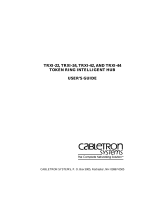 Cabletron Systems TRXI-44 User manual
Cabletron Systems TRXI-44 User manual
-
 Cabletron Systems TRMF-2 Installation guide
Cabletron Systems TRMF-2 Installation guide
-
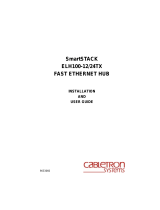 Cabletron Systems SmartSTACK ELH100-12TX User manual
Cabletron Systems SmartSTACK ELH100-12TX User manual
-
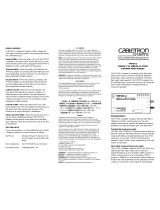 Cabletron Systems TPFOT-2 User manual
Cabletron Systems TPFOT-2 User manual
-
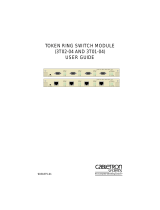 Cabletron Systems 3T02-04 User manual
Cabletron Systems 3T02-04 User manual
-
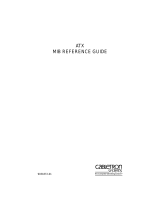 Cabletron Systems ATX Specification
Cabletron Systems ATX Specification
-
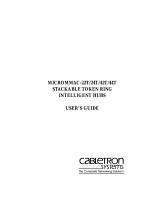 Cabletron Systems MicroMMAC-42T User manual
Cabletron Systems MicroMMAC-42T User manual
-
 Cabletron Systems BRIM-T6 User manual
Cabletron Systems BRIM-T6 User manual
-
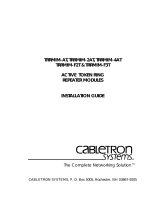 Cabletron Systems TRRMIM-AT Installation guide
Cabletron Systems TRRMIM-AT Installation guide
-
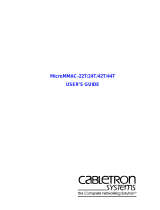 Cabletron Systems MicroMMAC-42T User manual
Cabletron Systems MicroMMAC-42T User manual
Other documents
-
Zonet ZFS3216P Installation guide
-
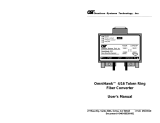 Omnitron Systems Technology OmniHawk User manual
Omnitron Systems Technology OmniHawk User manual
-
Sitecom LN-227 Datasheet
-
Mitsubishi Electric Air Conditioner GB-24A User manual
-
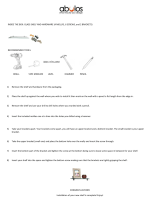 ABOLOS HMDSEC1030-RE Installation guide
ABOLOS HMDSEC1030-RE Installation guide
-
Sterling 682.88107.00 User manual
-
Black Box 16-Port Type 3 MAU User manual
-
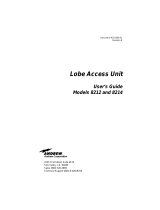 Andrew 8214 User manual
Andrew 8214 User manual
-
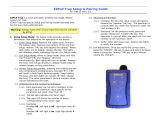 EZPull Trap Setup & Pairing Manual
EZPull Trap Setup & Pairing Manual
-
Delta DS20 User guide









































































































